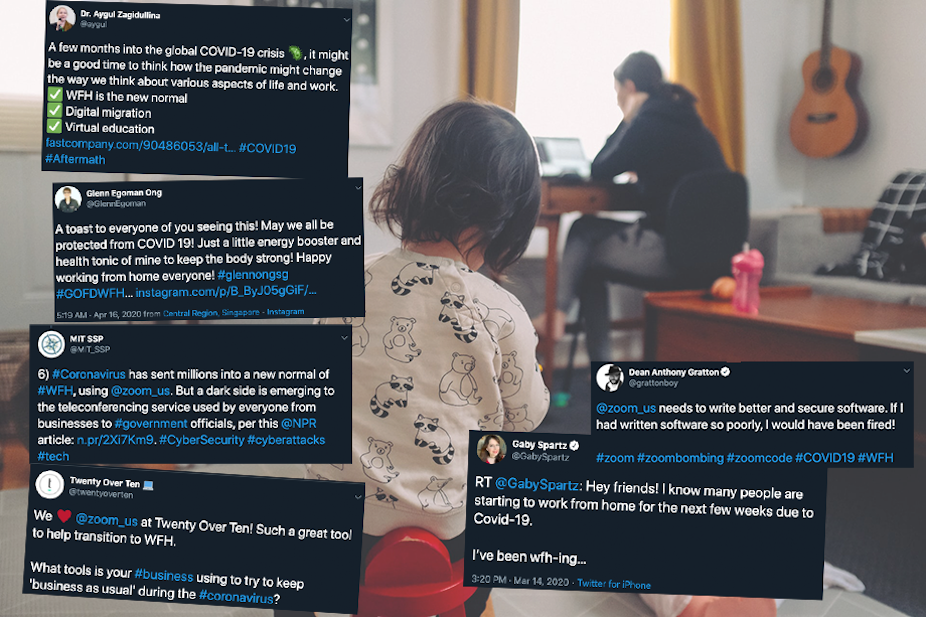The effects of coronavirus on the economy already appear bleak. Unemployment and government borrowing are soaring and a recession seems inevitable.
Yet amid these worrying developments there are positive elements to be found. Many of those who have kept their jobs have found they can keep working without the need for a daily commute. Recent research suggests that up to half of UK workers can do their jobs remotely.
And it’s not just office workers. Teachers, GPs, politicians and judges have all swiftly adapted to professional isolation. In just a few weeks, the traditional workplace has been transformed.
Suddenly fears that technology will destroy job have given way to relief that it can help save them. (Although the prospect of robot doctors treating patients, drones transporting vaccines and 3D printers producing face masks does not seem like a bad idea all of a sudden.)
Of course, working from home (WFH) requires considerable levels of adjustment. But data from our ongoing research shows that, on the whole, people seem seem quite positive about this aspect of their restricted lives.
Read more: Working from home? Why detachment is crucial for mental health
In the middle of March 2020, we collected tweets using the hashtags #Coronavirus and #COVID-19 to observe how people were reacting on social networks to the pandemic. After processing 60 million tweets and removing the retweets, we focused on 6,500 messages from March 14 to April 6 that contained the hastag #WFH.
The idea was to assess how people were feeling about working from home. Overall, we found that 70.6% of the tweets reflected a positive sentiment towards the idea. The tweets that came from UK users after the lockdown on March 23 saw a rise in the positive feedback sentiment to 78.6%.
We used something called “sentiment analysis” to assess the tweets. For our purposes this was a lexicon-based approach where every tweet is represented as a group of words, which are each scored on a scale from negative to positive. A mathematical algorithm is then applied in order to a make a final assessment of the tweet’s overall sentiment.


We were also curious about the topics people were talking about. One of the more popular methods to extract themes from text is called “topic modelling”, which is essentially a way of processing large amounts of data – in this case tweets – to find out what words and phrases are being used the most.
Word power
Words such as “respect”, “inspire” and “proactive” appeared between 1,000 and 3,000 times in the #WFH tweets, indicating a positive response to the concept of working from home over the course of the pandemic.
Generating a word-cloud to observe the frequency of the words appearing in the tweets during this period, we also found the overall sentiment of the social media response to #WFH to be positive. There is a clear sense of productivity, with words such as “team”, “tips”, “satisfaction”, “service”, “remote”, “support” and “good” among the most prominent.

To build a deeper understanding of these positive feelings, we then mapped the sentiment generated from the tweets per day before the lockdown in the UK.
As the effects of coronavirus and lockdown intensified, so too did the mentions of working from home on Twitter. But there were dips too, most noticeably at the end of March 27, where there was a steep drop in #wfh references of nearly 50% which lasted for three days. We believe this could align with media reports highlighting concerns about children’s wellbeing during lockdown and widely expressed worries about the security of online meeting software, which were also expressed in some of the tweets.
There were negative experiences recorded too. For workers with children to look after, the changed dynamic of domestic life created new and widespread challenges. Yet this also inspired moments of gratitude and offers of help. The tweets we looked at showed evidence of small online communities forming, with people very happy to share #WFH tips and ideas.
Of course, working from home is not a new concept. But coronavirus has, in a very short space of time, forced it to become a normality for much wider sectors of the workforce. And overall, our research shows that the response to this has been positive.
This raises a new quandary about what will happen after the lockdown is lifted. Will businesses start to widen the practice to allow more flexibility to their employees? And if they don’t, how will employees feel about a return to the “old” ways of doing things? No doubt the response on social media will give us some clues.

